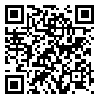Volume 9, Issue 2 (2020)
JCP 2020, 9(2): 217-231 |
Back to browse issues page
1- Faculty of Nature and Life Sciences, Mustapha Stamboli Mascara University (29000), Algeria. , moutassemdahou@gmail.com
2- Faculty of Nature and Life Sciences, Mustapha Stamboli Mascara University (29000), Algeria.
3- Laboratory of Characterization and Valorization of Natural Resources (L. C. V. R) SNV-STU Faculty-Bordj Bou Arreridj University (34000)-Algeria.
2- Faculty of Nature and Life Sciences, Mustapha Stamboli Mascara University (29000), Algeria.
3- Laboratory of Characterization and Valorization of Natural Resources (L. C. V. R) SNV-STU Faculty-Bordj Bou Arreridj University (34000)-Algeria.
Abstract: (3362 Views)
The present study was aimed to investigate the effects of secondary metabolites produced by five Trichoderma spp. on the control of Fusarium wilt caused by Fusarium oxysporum f. sp. ciceris (FOC) in chickpea. In vitro biocontrol potentialities of Trichoderma spp. against FOC was tested. Trichoderma secondary metabolites were extracted by solvent extraction methods and evaluated against FOC. In vitro tests showed very good inhibitory effects by all Trichoderma spp. against FOC along with an inhibitory rate up to 73.8% and 27.8%, for direct and indirect contacts, respectively. Additionally, Trichoderma spp. caused a significant decrease in Fusarium wilt disease severity, in particular, T. polysporum showing 64.2% of disease severity reduction. The tested secondary metabolites were also effective against FOC with a significant decrease of mycelial growth from 6% to 76.9%. Similarly, in vivo tests revealed that secondary metabolites were very active in reducing disease severity. It was found that T. polysporum was the most active with 56.9% of disease severity reduction. Chickpea resistance is mostly attributed to polyphenolic compounds. The studied Trichoderma spp. and their secondary metabolites could be used as potential and promising antifungal agents in preventing the occurrence of Fusarium wilt in chickpea.
Article Type: Original Research |
Subject:
Biocontrol of Plant Diseases
Received: 2018/09/9 | Accepted: 2019/12/7 | Published: 2020/01/26
Received: 2018/09/9 | Accepted: 2019/12/7 | Published: 2020/01/26
| Rights and permissions | |
 |
This work is licensed under a Creative Commons Attribution-NonCommercial 4.0 International License. |



